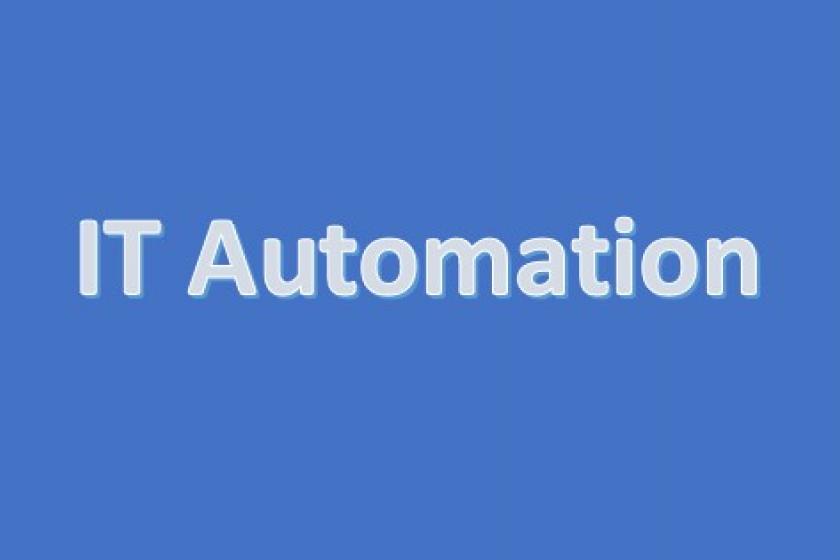Modern Network Automation is Missing from Modern ITModern Network Automation is Missing from Modern IT
Delivering automation throughout the IT stack helps alleviate organizational strains, making it possible to manage change at scale both on-premises and in the cloud while ensuring the performance and functionality.
June 18, 2021

By and large, the pandemic has prompted IT leaders to rethink modernization efforts, recognizing how important agility, performance, and security have become in the wake of the widespread shift to remote work and the reorientation and digitization of business operations. In this effort, enterprises are finding increasing value in automation, particularly network automation, to streamline IT operations and accommodate fast-changing enterprise IT. Before the pandemic, network automation was a "nice to have" for forward-thinking organizations, but now that remote operations are commonplace, and IT environments span complex webs of vendor devices, multiple on-prem HQs, and branch locations, and cloud environments, automation has become a mandate to achieve the efficiency and accuracy modern organizations require.
Automation is critical to creating an agile and secure IT stack. But investments in the resources, time, and effort required to transition the workforce skillset and self-build automation rarely provide the expected return. Organizations will face limited success when implementing automation if they do not heed industry best practices, integrate the right tooling and shift their focus to strategic self-operation. With the right architectures and strategies in place, enterprises can achieve the flexibility, performance, scalability, and security needed to effectively adapt to the large-scale change in work environments, and business bottom lines demand.
Network automation is the missing link
Automation promises to simplify and alleviate the burden of redundant, tedious tasks while streamlining manual processes that do not require human intervention. In its broadest definition, automation is becoming widely adopted in modern IT environments and a critical element of modernization efforts. Yet, automation alone will not have the dynamic impact it should if it is not applied correctly. Intelligent capabilities are important - enabling automated IT to turn into self-operating IT - as are the right applications.
For many enterprises, network automation is the missing link for a fully automated IT stack. As networks become more complex and workloads are increasingly being driven to the cloud, the need for a solution that ties everything together and is powerful enough to stretch across multiple platforms, both on-prem and in the cloud, is more necessary than ever before. With intelligent network automation that is intent-based and declarative in place, teams have the ability to react quickly to unplanned events such as security threats or vendor vulnerabilities, flexing and scaling with whatever situation may occur to ensure business continuity.
It's important to consider the differences needed to automate both traditional and modern infrastructures, as well as all their touchpoints, including integrations through APIs. Delivering automation throughout the IT stack helps alleviate organizational strains, making it possible to manage change at scale both on-prem and in the cloud while ensuring the performance and functionality of both brownfield (existing legacy) and greenfield (new) systems. As such, leveraging automation keeps IT operations running full steam while digitalization and modernization are underway.
Organizational change leads to wider adoption
The onset of the pandemic forced IT decision-makers to quickly reevaluate infrastructure and operations (I&O) to ensure their organizations were prepared to address the new and unique challenges presented by the unprecedented disruption. It was never more imperative to ensure that I&O teams were closely aligned with business goals and able to support, if not optimize, organizations’ bottom lines. In order to do this, I&O teams must learn how to operate differently in refining human practices to accommodate the processual changes necessary to support automation. Legacy approaches to automation require skill development, scripting/programming development, and testing, creating a long lead time to deliver on this business needs. This often requires a concerted effort made by IT leadership and practitioners alike, aligning adoption with business goals from the top down and breaking down organizational silos that strain efficiency. It's critical that IT leadership sees themselves as change agents in this regard to adopt new technologies and automation approaches and move away from older, inefficient methods and solutions.
Adapting to large scale change
One of the challenges organizations face when implementing automation in their IT stack is the ability to adapt to large-scale change. However, with a strong foundation in place and ample planning, organizations can bypass this challenge with ease. In a sense, enabling broad-scale change is similar to building a skyscraper: once the foundation is complete, it can be built very quickly. Leadership teams can follow this approach by first setting a vision for the use cases they want to automate and the benchmarks, metrics, or milestones they want to use to determine success. Then it becomes a matter of outlining incremental steps, first to achieve quick wins and then to expand the use cases for automation and executing against this plan. Initial steps could include:
1) Start with the fundamentals by focusing on efforts that build towards the bigger changes. Implementing new technology can be a drastic change for many organizations that already have a process in place, especially for those who have been in business for decades. The key to successful modernization is to reevaluate your entire IT infrastructure, conduct an assessment of what's working and what isn't, and the types of skillset and mindset needed to adjust to change. This will help to close the gap for any of the missing pieces and prepare for large-scale change once you've identified the fundamentals needed to lay out a foundation. This can start with automating low-risk, read-only tasks like network discovery, device inventory, configuration drift monitoring, auditing, and troubleshooting.
2) Once you have your foundation in place, then it's time to invest in the future, the vision, and the achievable goals that can be accomplished along the way. Investments can include hiring new employees or upskilling current ones to help fulfill the skillsets needed to implement change. Setting a new vision for your organization and aligning it with achievable goals that are tangible can also help streamline productivity and ensure that deliverables are accomplished. This will help accelerate large-scale change throughout the enterprise. Expanding network automation to address current use-cases can provide quick wins to build off and gain confidence in the process and approach.
3) Build out a roadmap. Create a roadmap that aligns well with where the business wants to go in the next three to five years. This can enable employees to get a more targeted approach to the work that needs to be done upfront, which can be a force multiplier throughout the enterprise. Once this is finalized, put in the groundwork and execute the vision by going through the steps, which will eventually lead to buy-in from individuals involved. This often starts with automating domains like the campus/LAN, WAN, and Data Center, then expands to newer SD-WAN deployments and public cloud IaaS.
Investing in the right capabilities and intelligence while building a roadmap that aligns with the strategic business direction will inspire IT teams to become more supportive of business operations and act as a force multiplier throughout the enterprise. Investment in the right foundation for network automation will set the stage for future enablement, such as self-operating capabilities, hardened security, and the concentration of manual processes. Empowering IT teams with this level of intelligence using network automation is what will enable a company to build an agile, modern IT stack ready to take on future enterprise demands.
Jeff Gray is the CEO and co-founder of Gluware.
About the Author
You May Also Like




